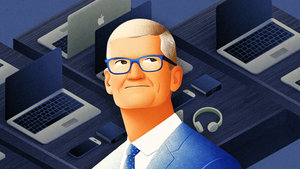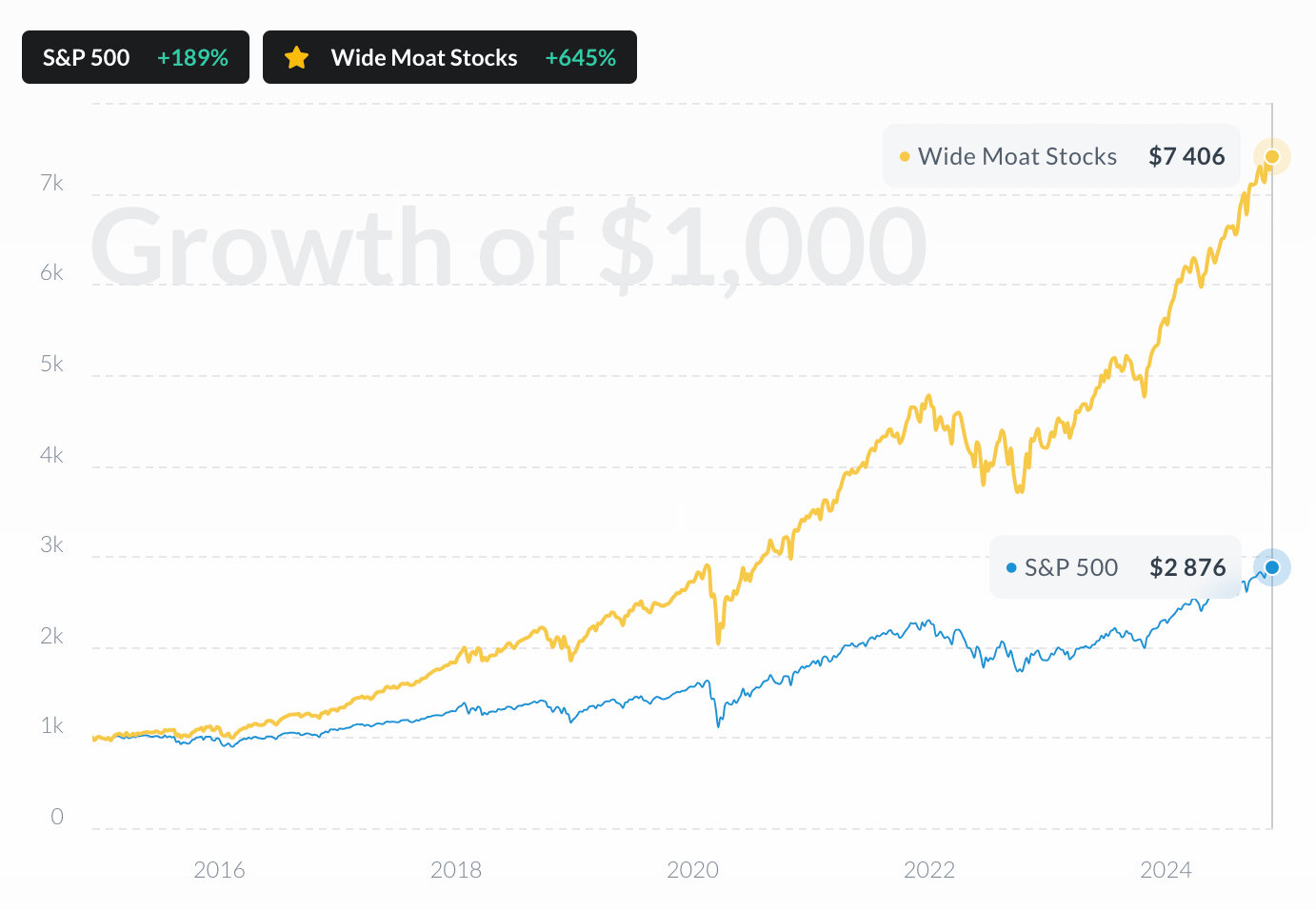
Apple: Business Overview

Apple (AAPL) is a strong investment candidate due to its ecosystem-driven business model, leadership in consumer technology, and expanding presence in services and artificial intelligence. The company's continued innovation in hardware, including custom silicon chips like the M-series and upcoming AI-powered features, reinforces its competitive edge. Apple's deep integration across devices, from iPhones to Macs and wearables, along with its growing services segment—spanning iCloud, Apple Pay, and the App Store—drives long-term revenue stability. With a strong financial position, a loyal customer base, and increasing monetization of its ecosystem, Apple remains well-positioned for sustained growth despite macroeconomic challenges.
INVESTMENT THESIS
Apple (AAPL) is a global leader in consumer electronics, software, and digital services, renowned for its innovation in personal computing, mobile technology, and ecosystem-driven experiences. The company operates through segments including iPhone, Mac, iPad, wearables & accessories, and services, with a mission to create seamless, user-centric technology that enhances everyday life. Apple generates the majority of its revenue from iPhone sales, complemented by its expanding services segment, which includes the App Store, iCloud, Apple Music, and subscription-based offerings.
Apple maintains a competitive edge through its vertically integrated hardware-software ecosystem, proprietary chip technology, and strong brand loyalty. The company’s in-house silicon, such as the M-series chips for Mac and A-series processors for iPhone, delivers industry-leading performance and efficiency. Meanwhile, its services business continues to grow as a high-margin, recurring revenue stream, reinforcing customer retention and deepening ecosystem engagement.
With its dominance in premium consumer electronics, advancements in custom silicon, and strategic expansion into augmented reality, financial services, and AI-driven applications, Apple remains at the forefront of technological innovation and digital lifestyle experiences.
ECONOMIC MOAT
AAPL has WIDE ECONOMIC MOAT. Apple Inc. has established a formidable economic moat, anchored by its strong brand loyalty, seamless ecosystem integration, and premium hardware-software synergy. The company maintains a significant competitive edge through its proprietary iOS ecosystem, high-margin products, and a loyal customer base, reinforced by services like the App Store, iCloud, and Apple Pay.
1. Market Leadership in AI and Accelerated Computing
Apple leads in AI-driven computing through its advanced silicon design, seamless hardware-software integration, and ecosystem-wide AI capabilities. Its custom chipsets, including the M-series for Macs and A-series for iPhones, leverage AI acceleration to deliver superior performance and efficiency. Apple's focus on privacy-centric AI and on-device intelligence differentiates it from cloud-reliant competitors, reinforcing its market strength.
2. Advanced AI and Edge Computing Solutions
Apple's proprietary silicon, including the latest M4, integrates high-performance Neural Engines optimized for AI workloads. This allows Apple to drive innovation in real-time AI applications, from generative AI features to computational photography and on-device machine learning. Apple's edge computing approach enhances user experience while maintaining security and power efficiency.
3. AI-Powered Software and Platform Ecosystem
Apple’s AI strategy extends beyond hardware to a tightly integrated software ecosystem. Features like Siri, Apple Vision Pro’s spatial computing, and AI-driven automation in iOS and macOS create a high-engagement user experience. Apple's AI frameworks, such as Core ML and Create ML, empower developers to build optimized AI applications, strengthening its platform stickiness and long-term revenue potential.
4. Vertically Integrated AI and Semiconductor Supply Chain
Unlike traditional semiconductor firms, Apple designs its own chips, optimizing performance across its entire product lineup. Its deep collaboration with TSMC ensures cutting-edge process nodes, while in-house AI model training enhances Siri, Apple Search, and generative AI applications. This vertical integration improves efficiency, margins, and scalability across consumer and enterprise markets.
5. Infrastructure and Strategic Partnerships
Apple’s AI leadership is reinforced through strategic partnerships, including cloud collaborations for AI model training, enterprise integrations with Microsoft and Google, and AI-driven developer tools in Xcode. Its work with supply chain partners like Foxconn and TSMC ensures scalability, while partnerships in augmented reality, automotive, and health tech expand its AI footprint.
6. Expansion Beyond Consumer AI into AR, Automotive, and Health
Apple is extending AI innovations beyond personal devices into augmented reality (Vision Pro), autonomous systems (Project Titan), and health technologies (Apple Watch and AI-powered diagnostics). These advancements position Apple as a leader in AI-driven experiences across multiple industries, ensuring sustained differentiation and long-term growth.
BULL AND BEAR THESES
The company’s heavy reliance on iPhone sales leaves its overall revenue vulnerable if the smartphone market slows or consumers shift toward more cost-effective alternatives.
Apple’s robust ecosystem, anchored by iPhone, Mac, and iPad, cultivates strong customer loyalty and recurring hardware upgrade cycles that drive revenue stability.
PRODUCT OFFERING
1. iPhone & Hardware Ecosystem
The iPhone remains Apple’s flagship product, with over 250 million units sold annually, complemented by a tightly integrated ecosystem of Mac, iPad, Apple Watch, and AirPods.
- Comparison: Samsung leads in global smartphone shipments, while Google Pixel and other Android brands compete in specific segments, but Apple dominates the premium market.
- Competitive Edge: Vertical integration of hardware and software, a strong brand identity, and a loyal customer base ensure high retention and pricing power.
2. Apple Ads (Digital Advertising Platform)
Apple has rapidly grown its advertising business, generating over $10 billion in ad revenue in 2024, driven by App Store search ads, Apple News, and an expanding ad network.
- Comparison: Google dominates search advertising, while Meta leads in social ads, but Apple’s privacy-focused ad network is gaining traction.
- Competitive Edge: Apple’s strict privacy policies and first-party user data give it a unique position in contextual and intent-based advertising.
3. iOS & App Store (Software & Services)
iOS powers over 2 billion active Apple devices, with the App Store generating more than $90 billion in developer revenue annually.
- Comparison: Google’s Android has a larger global market share, but Apple’s ecosystem drives higher monetization per user.
- Competitive Edge: A controlled software environment ensures security, seamless updates, and a superior user experience, benefiting both developers and consumers.
4. Apple Services (Subscription & Cloud Revenue)
Apple’s services segment, including iCloud, Apple Music, Apple TV+, Apple Arcade, and Apple One bundles, generates over $100 billion in annual revenue.
- Comparison: Amazon and Google lead in cloud computing, while Spotify and Netflix dominate streaming, but Apple’s ecosystem approach boosts cross-selling.
- Competitive Edge: A seamless integration with Apple devices, high customer loyalty, and a diversified service portfolio enhance recurring revenue.
5. Apple Pay & Financial Services
Apple Pay, Apple Card, and Apple’s BNPL (Buy Now, Pay Later) services make Apple a major player in digital payments and fintech.
- Comparison: PayPal and Square lead in third-party payments, while Google Pay and Samsung Pay offer alternatives, but Apple Pay has the highest adoption among premium users.
- Competitive Edge: Built-in security, deep integration with iOS, and growing acceptance across merchants position Apple as a leader in mobile payments.
6. Apple Silicon (Chip Development & AI)
Apple’s in-house M-series chips have transformed Mac performance, while AI-driven features power Siri, on-device processing, and machine learning applications.
- Comparison: Nvidia dominates AI hardware, while Qualcomm and Intel compete in consumer chips, but Apple’s custom silicon optimizes efficiency and performance.
- Competitive Edge: Tight hardware-software integration, power efficiency, and industry-leading performance enhance Apple’s device experience.
7. Apple Health & Wearables
Apple Watch, AirPods, and health-focused services make Apple a leader in wearable technology and digital health innovation.
- Comparison: Fitbit and Samsung compete in wearables, but Apple Watch dominates the smartwatch category with deep iPhone integration.
- Competitive Edge: Health tracking, ecosystem lock-in, and FDA-cleared features position Apple at the forefront of personal health tech.
FINANCIAL RESULTS
1. Revenue Growth:
Apple’s revenue has grown at a compound annual growth rate (CAGR) of approximately 8% over the last five years, driven by strong iPhone sales, growth in Services, and expansion in Wearables. While this is lower than NVIDIA’s 30% CAGR, Apple’s scale and brand loyalty provide a stable revenue base. Compared to the broader tech sector’s 9-10% CAGR, Apple remains a consistent performer, with Services contributing an increasing share of total revenue, reducing reliance on hardware cycles.
2. Operating Income:
Apple’s operating income has expanded at a CAGR of around 10% over the past five years, supported by its high-margin Services segment and operational efficiency. While this is lower than NVIDIA’s 35% CAGR, Apple’s focus on premium pricing and vertical integration ensures strong profitability. Apple’s Services division, which includes the App Store, iCloud, and subscriptions, contributes significantly to margin expansion, helping offset fluctuations in hardware sales.
3. Net Income and EPS
Apple's net income has grown at a CAGR of approximately 10-12% over the past decade, supported by strong brand loyalty, recurring revenue from services, and operational efficiency. While not as explosive as NVIDIA’s AI-driven expansion, Apple's consistent profitability is underpinned by its dominant position in premium hardware and a rapidly growing services segment. EPS growth has been further accelerated by aggressive share buybacks, robust gross margins, and continued ecosystem monetization across devices, software, and subscriptions.
4. Free Cash Flow (FCF):
Apple has consistently demonstrated robust free cash flow generation, providing the company with significant financial flexibility for investments in research and development, strategic acquisitions, and shareholder returns. In fiscal year 2024, Apple reported a free cash flow of $98.3 billion, reflecting a 9% increase from the previous year.
This substantial cash flow enables Apple to maintain a strong balance sheet and continue its capital return programs, including dividends and share buybacks. Notably, under CFO Luca Maestri's tenure, Apple has returned over $134 billion in dividends and repurchased more than $600 billion in stock, reducing outstanding shares by approximately 37%.
5. Margins and Profitability Analysis:
- Gross Margin: In fiscal year 2024, Apple's gross margin was 46.2%, positioning it competitively within the technology sector. This margin reflects Apple's efficient supply chain management and premium pricing strategy.
- Operating Margin: While specific operating margin figures for 2024 are not detailed in the available sources, Apple's operating income for the fourth quarter of 2024 was $29.59 billion, indicating strong operational efficiency.
- This performance underscores Apple's ability to manage operating expenses effectively while driving revenue growth.
- Return on Equity (ROE): In fiscal year 2024, Apple's ROE reached 144.03%, significantly outperforming industry peers and indicating exceptional profitability and efficient use of shareholder equity.
- Return on Invested Capital (ROIC): Specific ROIC figures for Apple in 2024 are not provided in the available sources. However, Apple's substantial free cash flow and high ROE suggest effective utilization of invested capital, contributing to value creation for shareholders.
Overall, Apple's strong free cash flow generation and superior profitability metrics highlight its financial strength and strategic flexibility, enabling continued investment in innovation and consistent returns to shareholders.
SHAREHOLDERS RETURNS
1. Dividends
Apple has historically maintained a balanced approach to capital allocation, prioritizing product innovation, ecosystem expansion, and shareholder returns. While the company does pay a dividend, it remains relatively modest compared to its substantial cash flow generation. In FY 2024, Apple’s annual dividend per share was approximately $0.96, yielding around 0.5%, which is lower than some dividend-heavy peers but consistent with its strategy of maintaining financial flexibility.
Unlike high-dividend-paying companies such as IBM, Apple focuses on capital appreciation through continued investment in its hardware, software, and services ecosystem. However, given its strong profitability and cash reserves, there is room for future dividend growth as the company seeks to enhance shareholder value over time.
2. Share Repurchases
Apple has been one of the most aggressive companies in terms of share buybacks, consistently reducing outstanding shares and boosting earnings per share (EPS). Over the past decade, Apple has returned hundreds of billions of dollars to shareholders through repurchases. In FY 2024 alone, the company spent over $80 billion on buybacks, reflecting its confidence in long-term growth and financial strength. As of early 2025, Apple still has a significant authorization remaining under its ongoing buyback program.
By combining reinvestment in its ecosystem with substantial buybacks, Apple balances long-term innovation with immediate shareholder returns.
3. Shareholder Return Yield Over the Last 5 Years
Apple’s total shareholder return (TSR) over the past five years has been robust, consistently outperforming the broader market. Between 2019 and 2024, Apple delivered an average annual TSR of approximately 25-30%, driven by strong iPhone sales, services growth, and expansion in wearables.
- Comparison to Industry and S&P 500
- Technology Sector: The sector has averaged a 20-22% TSR, with cloud and AI-driven companies leading the growth. Apple has outperformed many peers, thanks to its brand strength and ecosystem stickiness.
- S&P 500: The broader market delivered an average TSR of 12-14%, meaning Apple has meaningfully exceeded index-level returns.
- Peers: Compared to Microsoft (~24-25%), NVIDIA (~45-50%), and Alphabet (~17-19%), Apple’s TSR remains highly competitive, supported by consistent revenue growth and strong capital return programs.
With a loyal customer base, growing services revenue, and continuous innovation, Apple’s long-term return potential remains solid, ensuring sustained value creation for shareholders.
SENTIMENT
The sentiment towards Apple (AAPL) remains predominantly positive, with 46% of investors on financial platforms expressing confidence in the company, while 37% take a neutral stance. The optimism stems from Apple’s strong brand loyalty, consistent revenue growth from its diversified product portfolio, and its leadership in the premium smartphone, wearables, and services markets.
Investors are especially excited about Apple’s expansion in services, including the growth of its App Store, iCloud, and Apple Music. The company’s push into augmented reality (AR) and its potential in the AI space further bolster its appeal as a key player in shaping the future of technology.
Apple's robust ecosystem, combining hardware innovation, software integration, and services growth, positions the company for continued market leadership. The strategic expansion of its wearables, services, and AI-driven technologies enhances both revenue streams and customer loyalty. With a strong brand, efficient supply chain, and increasing focus on sustainability, Apple is well-positioned to maintain its high-margin business model, making it an attractive long-term investment.
BUSINESS COMPOSITION
| Segment | Share |
|---|---|
|
%
|
|
|
%
|
|
|
Products
75.4%
|
|
|
%
|
|
|
iPhone
51.4%
|
|
|
Macbook
7.7%
|
|
|
iPad
6.9%
|
|
|
Wearables, Home and Accessories
9.4%
|
|
|
Services
24.6%
|
|
|
%
|
|
1. Products & Services – Approximately 63% of Total Revenue
This segment includes revenue from Apple’s wide array of consumer electronics, including iPhones, iPads, MacBooks, and accessories, alongside services such as the App Store, iCloud, Apple Music, and the AppleCare protection program. Apple maintains its position as a market leader in smartphones and premium computing devices while driving strong growth from its services division, which includes recurring revenue streams from subscriptions. It faces competition primarily from Samsung, Google, and other device makers, but its integration across hardware and software remains a significant competitive advantage.
2. Wearables, Home, and Accessories – Approximately 19% of Total Revenue
Apple's wearables, including the Apple Watch and AirPods, continue to grow in popularity, benefiting from new health-related features and seamless integration with its ecosystem. This segment also includes sales of smart home devices such as the Apple TV and HomePod. While competition from Fitbit, Garmin, and Amazon exists, Apple's focus on health tracking and ecosystem connectivity gives it an edge in the wearables market.
3. Mac & iPad – Approximately 18% of Total Revenue
- Mac (~12%): The MacBook and iMac product lines continue to drive strong sales, particularly with the introduction of Apple’s M-series silicon chips, which provide significant performance and energy efficiency improvements.
- iPad (~6%): iPads are well-positioned in the tablet market, with significant use cases in education, business, and personal use.
- Together, these segments highlight Apple’s dominance in premium consumer devices, from smartphones and wearables to high-performance computing, while also benefiting from strong growth in its services and accessories markets.
CONCLUSION
Apple stands as a premier investment opportunity, bolstered by its leadership in consumer electronics, software ecosystems, and innovation-driven growth. As a global leader in premium smartphones, tablets, and wearables, Apple’s ecosystem of hardware, services, and apps continues to strengthen its dominance in the tech industry.
The company’s services segment, driven by growth in iCloud, Apple Music, Apple TV+, and the App Store, has become a major revenue contributor, generating tens of billions of dollars annually. Meanwhile, the iPhone remains a cornerstone of Apple’s business, with each new iteration continuing to set new benchmarks in design and functionality. Apple's expanding footprint in wearables, through products like the Apple Watch and AirPods, further diversifies its revenue streams.
Apple’s competitive moat is reinforced by its unparalleled brand loyalty, seamless integration of hardware and software, and the secure, user-friendly experience it provides across its devices. As a vertically integrated company, Apple controls its entire ecosystem, which enhances both customer retention and profit margins.
With strong cash flow, a diversified revenue base, and consistent innovation, Apple remains a top-tier investment for those seeking stable growth in the consumer technology and services sectors. We maintain a BUY rating on Apple stock with a $289 price target.

Dr. Viktor Kalm is a Senior Investment Analyst at Alpha Spread. He has over seven years of experience in corporate finance, specializing in financial modeling, business valuation, and strategic planning services. Previously, as a hedge fund manager, he focused on private equity management, consistently delivering positive returns to his clients.

Dr. Viktor Kalm is a Senior Investment Analyst at Alpha Spread. He has over seven years of experience in corporate finance, specializing in financial modeling, business valuation, and strategic planning services. Previously, as a hedge fund manager, he focused on private equity management, consistently delivering positive returns to his clients.










































 You don't have any saved screeners yet
You don't have any saved screeners yet